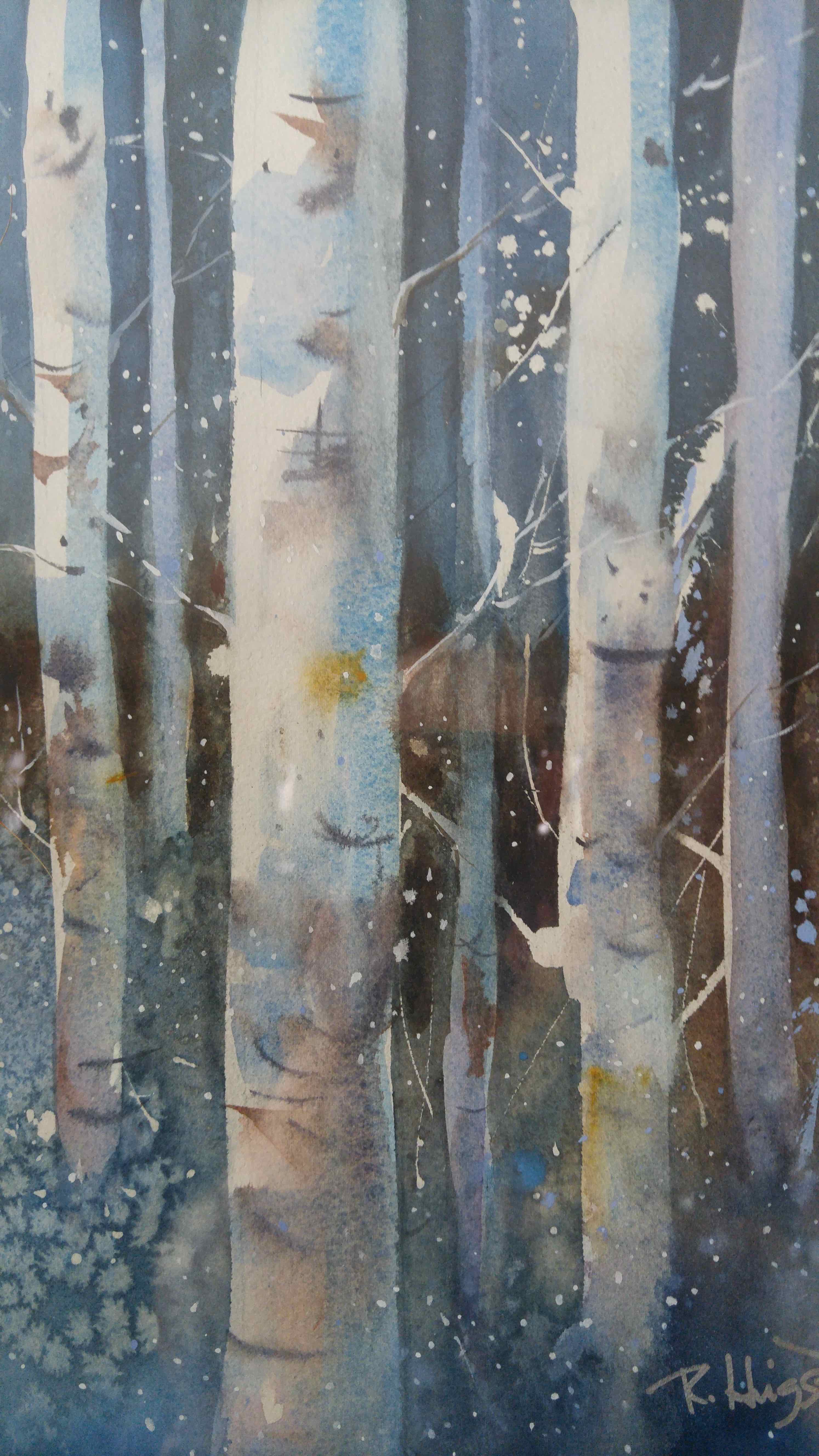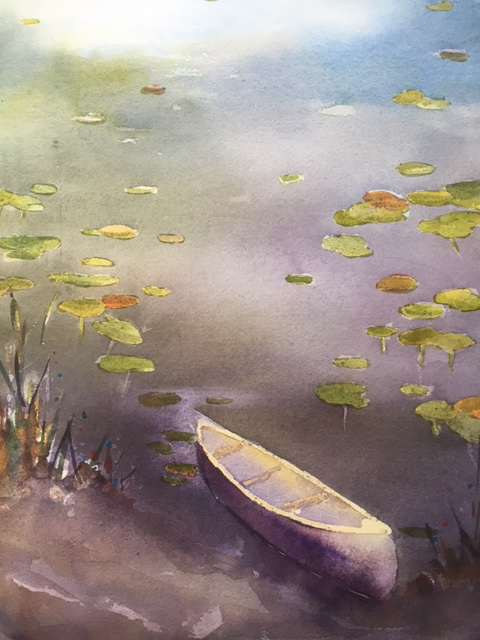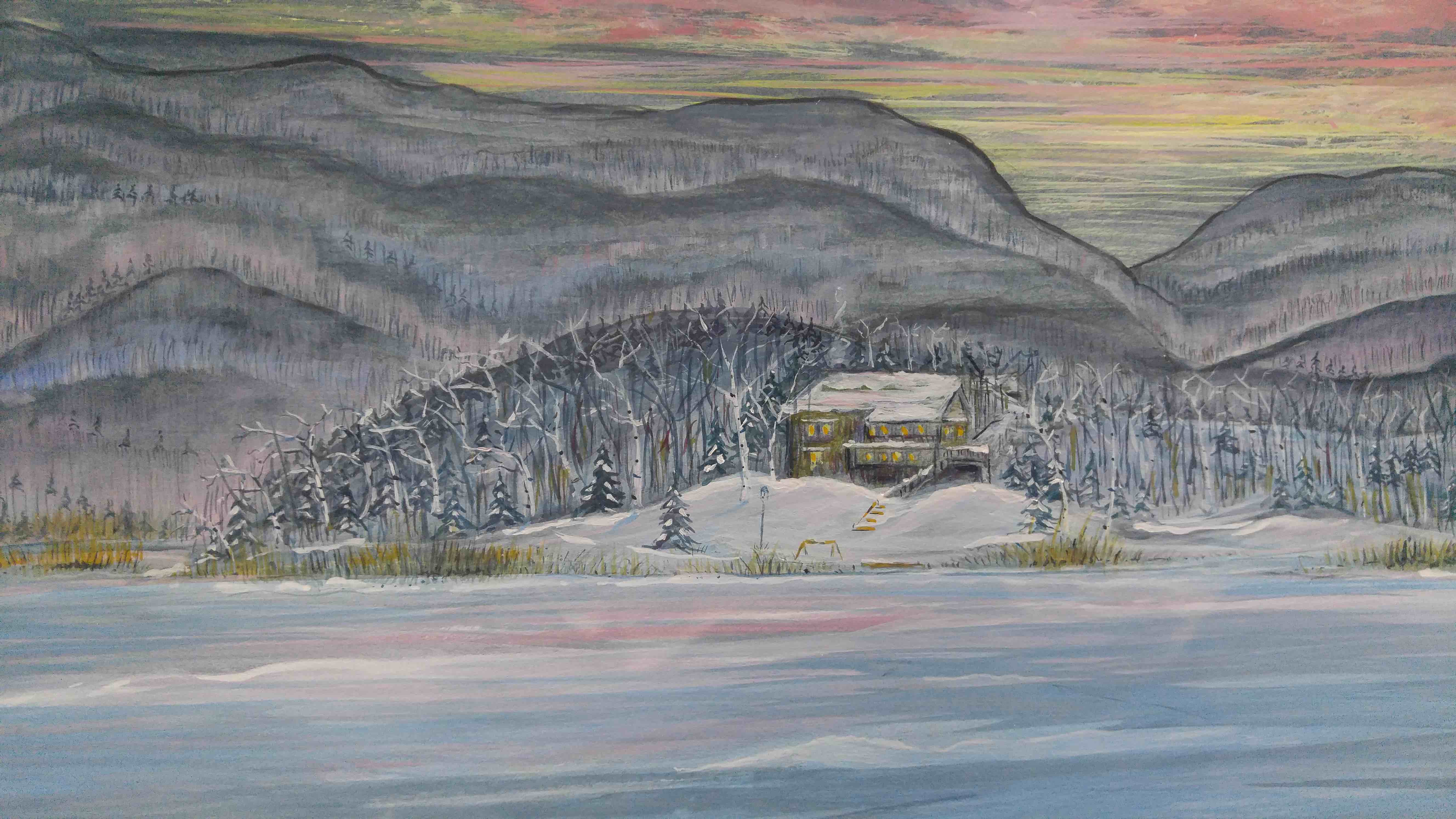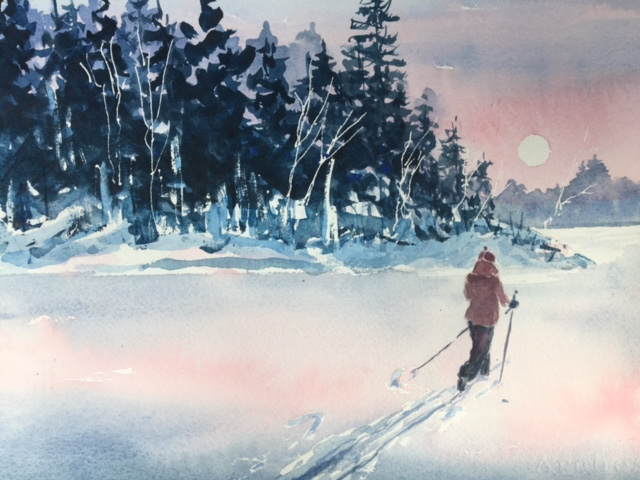
WHY WE BOUGHT THIS HOME
I came here one day […]
I knew at once that I would never leave.
— Po Chü-i
It was late May when we first drove the twenty-five minutes from the capitol. We drove north to visit a house Sarah had found in Picket Fence Preview, a for-sale-by-owner magazine one shoves into their bag of salad and milk at the co-op. The tiny ad showed a brown house with green trimmed windows set on an isolated cove that the sellers called Turtle Cove. On the bumpy dirt road drive up County Road, we worried about the cost, about the size. We wondered, even, if we were ready to buy a house, create a home. We were dating, not yet engaged. Still learning this thing called love. If we bought a house, we agreed, we wanted something small, tucked into a quiet hill. Something inexpensive so we could travel. Still, we parked at the garage and walked down a steep driveway through a tunneling of maples. Red trilliums bloomed on either side of the gravel driveway. Sarah’s favorite flowers. She smiled and rubbed my hand. Once near the house, we glimpsed isolated Turtle Cove, which rests, like a watery front yard, in front of the house. Sarah squeezed my hand — harder — as we looked at the glassed water, the reflection of Solstice Mountain. I squeezed back. Sarah grew up on lakes. I grew up a boy beside a wild river. I know water. Water knows me. We knocked on the front door. Margi showed us the house. A fine house. But we kept glancing outside, staring toward this isolated cove. Not another house in view. Just one beaver lodge across the watery way. As we walked the second floor—looking at bedrooms and offices—we heard a cooing from outside, barely audible. What is that? we asked. Margi replied, The loons. She walked us out onto a second story deck. There, Margi pointed. We leaned our arms against the railing. Below us, below a mirrored surface of the lake, two loons swam and danced and weaved, twisting and turning and courting beside the dock. With black wings tight against bodies, these loons transformed from birds into speckled black bullets. Except for the lace of white ornamenting their necks. They stayed beneath water for thirty seconds, a minute, a minute and a half. We watched, holding our breaths instinctively. To know the true meaning of awe. To feel my arms tuck tight against my body. To feel my mind dive beneath water. Few water birds dive and swim like a loon. No water bird can swim as deeply into a heart. We leaned into each other. We had not yet agreed on a price. We had not yet been approved for a mortgage. We had signed no closing papers.

MORNING'S REFLECTION
Sarah, cupping a mug of Saturday morning tea in the front of the canoe, whispers, As smooth as glass. The lake not a ripple except where one fish breaks free for a hatched fly and where our slow paddles coax the canoe’s bow through early water sheened to polished steel. Upon this water, we see the world reconceived—the blue sky, low slung sun, and mountain—through the law of reflection, which requires two rays of light—the incident rays born from Solstice Mountain and the reflected rays reborn upon Turtle Cove’s waters. To create perfect re-imaging, which physicists refer to as 'spectacular', rays must be hurled at right angles upon still water till water reveals world. Till Solstice Mountain is birthed upon lake. Smooth water rendered to ridges and valleys, rock walls and peaks. A duplicate glory. Mountain is mountain. This cove, too, now mountain.
PRIMAL SONG
During a spell so deep into night
that even dreams
have fallen toward sleep,
in our big bed overlooking the cove,
Sarah and I are yanked
from slumber by cacophonous calls
of loons.
Howled wails, trilling yodels,
and an eight note
wild cackling tremolo
emanate from prehistoric
long black throats
ensnared by a chain of white lilies.
These night songs have been sung
since the Eocene.
Songs of chimed glass
or a plucked bass
or witch’s song festooning
this north woods night.
Within this midnight magic concert,
we flutter closer toward
waking.
One of us sleep-mumbles,
The loons just hatched their chick.
And, yes, after
twenty-nine days upon a russet colored egg,
the two parents warble to a world
their night-joy,
which we will soon understand.
Come January, we will re-create this night-song
as our own.
Tonight, benighted, we learn from
loons
how to parent,
how to announce
midnight births.
And on that nearby faraway nest,
a black-wet chick—feet and beak and feathers
the color of tonight
—is called into a shadowy lake
by a quiet hoot, a calling asking,
Where are you?
A call saying,
Come to me.
Beneath the safety of tonight’s deep net
of black
and this quiet hoot, this new chick
swims into a world
of primal song.

THE INDUSTRY OF BEES
1.
On the ray of an aster, a honeybee
lingers, tidying pollen
into pollen baskets.
She’s just a lone thing
out foraging and pollenating,
measuring electrical
currents to uncover
her quarry.
Today she travels
miles and tastes thousands
of blossoms—hers is a grand love
of flight, of nectar,
till this evening when she returns
heavy to hive,
and overnights huddling
beside fifty thousand
working sisters,
toiling nectar to honey.
This is the industry of bees.
2.
Nearby, their only queen, revered
and defended and tasked
with little more
than a life of egg-laying.
A queen’s life is a cloistered
life, a served life, but
also a life that only
but once sees the light of day,
a life that never tastes
wild nectar upon
ever wilder flowers.
Might she ever dream of
those joyous rambles
of her worker-sisters?
TREES ONCE WERE SONGS
One morning in late spring we woke to song.
We, still wrapped within blankets and dawn,
listened till Sarah whispered, White throated sparrow.
Their song a soooo seeee dididi dididi dididi
sung from red maples and birches.
Or, some later morning, sitting now up in bed,
Sarah whispered, Hermit thrush,
as if the word itself
— thrush —
was a blessing.
Off in the woods, a fluting weaved its way
through morning.
Then wood warblers offered
high pitched
notes to an open sky above trees.
Ovenbirds, hugging earth, noted
deep and low calls of teacher-teacher-teacher.
Soon our trees were song.
A rising skirl blending within a trilled whistle
from the passerines, the perchers.
A world — a woods — of song
sung dawn and dusk,
to expanding day, increasing sun.
Now September mornings wake quietly.
Some might say emptily.
As if we are trying to find
something that was once here forever.
But dropping temperature, rising barometer,
carry songbirds to sky
as they begin their long migration
to South America,
leaving behind empty nests and waves
of silence in our trees.

THE WILD CULTURE SCRIBBLER'S QUESTIONNAIRE
1. What is your first memory and what does it tell you about your life at that time and your life at this time?
My first memory is, I believe, an invented memory. I have a memory of being in our RV, sitting in the driver’s side window somewhere out West. A bear came toward our window. And that is all I remember. I think this memory is invented because it mirrors a photo I’ve seen of me sitting on my dad’s lap. But what it tells me is that I live in memory, I think about how memory works, and I use that as I write creative nonfiction. I essay to explore memory.
2. Can you name a handful of artists in your field, or other fields, who have influenced you — who come to mind immediately?
Ed Abbey, Terry Tempest Williams, and the poets David Budbill, Cold Mountain and T'ao Ch'ien, and the bands The Gaslight Anthem, Lucero, Okkerville River, and The Hold Steady, during their early years.
3. Where did you grow up, and did that place and your experience of it help form your sense about place and the environment in general?
I was born along Pennsylvania’s Delaware River. Actually, that is a lie. I was born in the suburban heart of Long Island, New York. But I spent every summer along the Delaware River. And then when I was thirteen, we moved permanently to the river’s banks. And living in a rural town—Bangor—along a wild river (the Delaware is America’s longest undammed main stem river) taught me to love and need nature. It taught me that I affect my landscape but that my home ground affects me just as much. I would be a different human with a different home ground.
4. If you were going away on a very long journey and you could only take four books — one poetry, one fiction, one non-fiction, one literary criticism — what would they be?
I’d carry T’ao Ch’ien’s collected poems or else a collection of all the ancient Chinese poets to learn how to live within myself. I’d bring Grapes of Wrath or The Fool’s Progress. Both novels brought me to tears. For nonfiction, how about either Desert Solitaire or Everett Ruess’s letters and journals. As for literary criticism, I have not one idea. But how about a craft book on creative writing instead. How about some new anthology that explores creative nonfiction. Something like Bending Genre.
5. What was your most keen interest between the ages of 10 and 12?
Playing with my friends or alone outside. Sometimes playing army. Sometimes just biking through the woods.
6. At what point did you discover your ability with poetry?
It was definitely after my graduate school class where my professor kept writing on my poems, “This is not a poem.” But a year or two after that, I published a poem and then another poem. Now I publish lots of poems and the more I write the less I know what the difference is between a poem and an essay. So it was sometime during and right after grad school that I came to love poetry. But, again, my poems are often micro-essays or micro-stories with line breaks.
7. Do you have an ‘engine’ that drives your artistic practice, and if so, can you comment on it?
My engine is a work ethic. I have a need to work. Each day I put together a checklist and then I check things off. Writing gets put on that checklist. That sure makes it sound like work and not fun, but my to-do list is filled with fun things because I love working. So today I: re-stained my bathroom, re-grouted my shower, took out trash and compost, and wrote. And most people see all of that as work. I love doing all of that. I love seeing things (a bathroom reconstruction or a poem) find completion. Next up on my to-do list: backcountry ski.
The other thing is observation. Just looking around at the world—human and natural—and seeing what cool thing you discover. Each of these pieces sprang out of just observing what was occurring around me.
8. If you were to meet a person who seriously wants to do work in your field — someone who admires and resonates with the type of work you do, and they clearly have real talent — and they asked you for some general advice, what would that be?
Really simple: 1) Work hard. If you don’t work hard as a writer, you won’t be very successful. 2) Have fun. So much of writing is sitting here and type. I could be hiking, skiing, talking with my wife, making friends, traveling, … Instead, often I just need to write. If it’s not much fun, I ought to do other things. 3) Observe. See question 7. 4) Take risks. 5) Experiment with lots of voices. 6) work on your weaknesses rather than being consistent in tone/voice/style.
9. Do you have a current question or preoccupation that you could share with us?
How will America survive the next four Donald Trump years? How can we fight back to protect America? How can we demand that people argue over facts and truths rather than mere emotion or distortions?
Happier questions include what new things can I notice about my home here on Turtle Cove. How can this place affect and infect me even more.
10. What does the term ‘wild culture’ mean to you?
Earlier I wrote “Just looking around at the world — human and natural —”. Even as I wrote that, I knew I was not being clear enough. Humans are wild. Nature is wild. Humans are nature. There is no line between me and nature. I cannot remove myself from nature, or nature from me. So ‘wild culture’ is merely a term to remind us that we humans are and will always be a part of the wild. That no matter how we try to culture ourselves from wildness, we’re still always necessarily wild.
11. If you would like to ask yourself a final question, what would it be?
What is your favorite season on Turtle Cove? It’s a question my wife and I ask each turn of the season. And we never get an answer. Right now it’s snowing on the cove. And how could any season be better than the gentle fall of white onto white. The quiet. The solitude. But then spring bursts forth and there cannot be a thing to rival the trilliums from the earth except summer and heat and jumping in the lake until the leaves catch fire and our mountain, Solstice Mountain, is a wall of flames only put out by the quiet fall of snow. And we circle back again.

SEAN PRENTISS is the award winning author of Finding Abbey: a Search for Edward Abbey and His Hidden Desert Grave, a memoir about Edward Abbey and the search for home. Finding Abbey won the 2015 National Outdoor Book Award for History/Biography, the Utah Book Award for Nonfiction, the New Mexico-Arizona Book Award for Biography. Prentiss is the co-author of the environmental writing textbook, Environmental and Nature Writing: A Craft Guide and Anthology, and the co-editor of The Far Edges of the Fourth Genre: Explorations in Creative Nonfiction, a creative nonfiction craft anthology. He teaches at Norwich University and in the M.F.A. program at Vermont College of Fine Arts, and he and his family live on a small lake in northern Vermont. seanprentiss.com
RICHARD HINGSTON is a painter and retired visual arts teacher who taught for nearly four decades. He has spent many seasons on mountain lakes throughout the northeast, drawing upon their inspiration as an ally in his visual expression, and, enjoying the elements of fluidity, rhythm, and harmony that watercolor and nature share. He lives with his wife in Delaware.


Comments
Loved your stories, poems and
Loved your stories, poems and insights. What a perfect place to raise a fsmily. I hope to be able to visit one day.
I’m not sure this will find…
I’m not sure this will find you my fellow Rocky’s Crow. I thought of you recently after my wife Linda and I saw “A Complete Unknown”, we loved it. But more importantly, I thought of my old friend's love of Dylan. I hope this note finds you and Marjorie in fine spirits. I would love to catch up. My email is included, please reach out. With love, Joe BTW I love the paintings & poems
Hi Joe, I think you can find…
Hi Joe, I think you can find Sean here: https://www.seanprentiss.com/
Thanks, Whitney
Add new comment